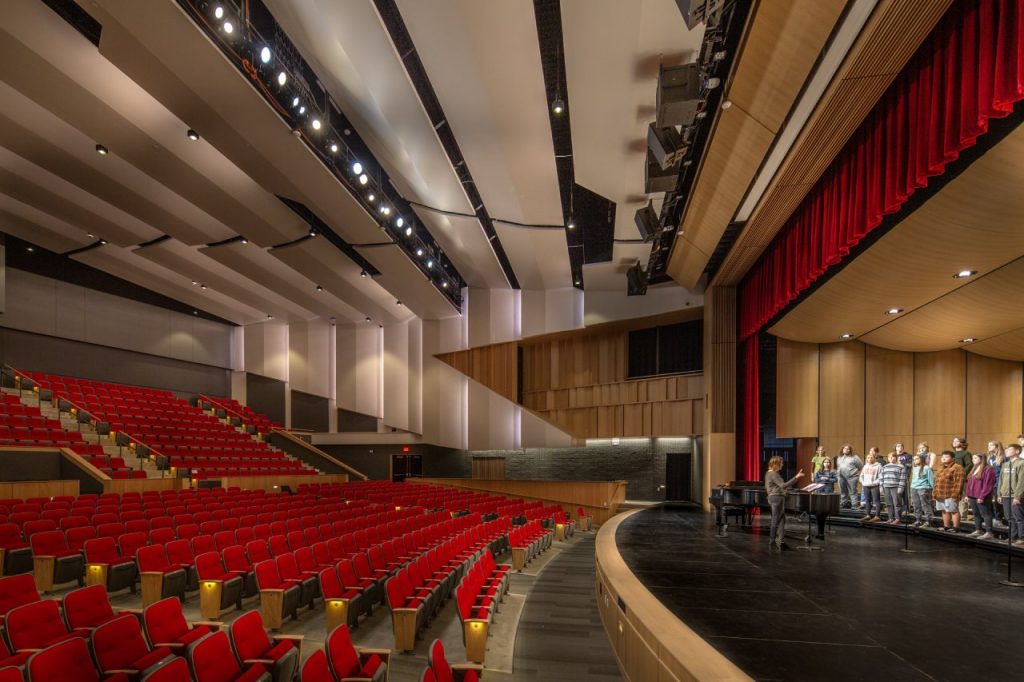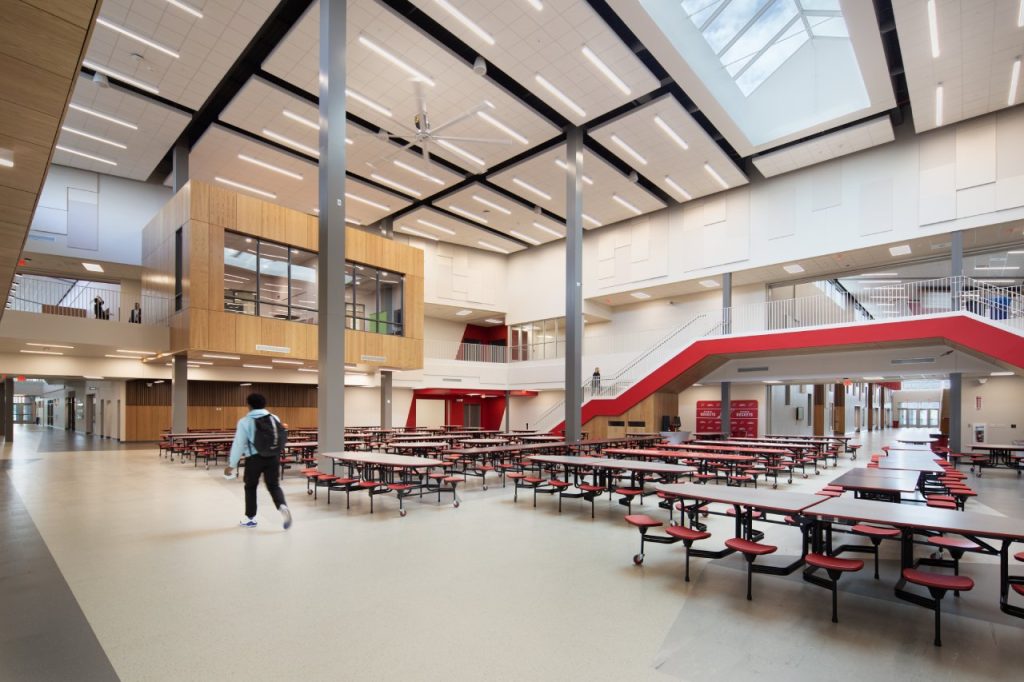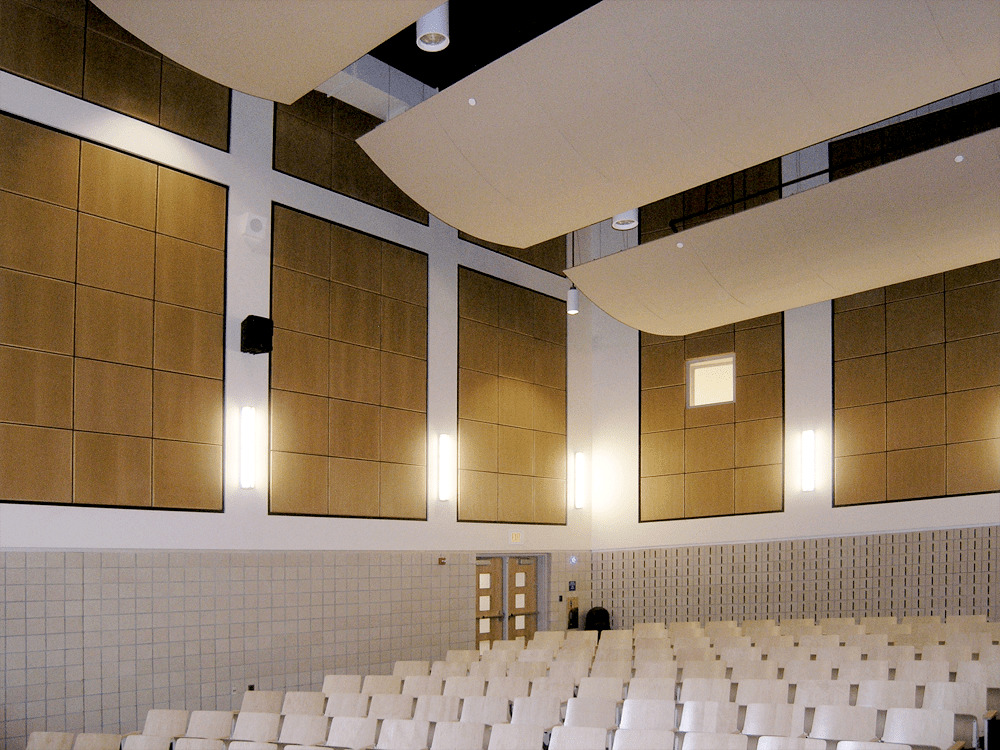
Noise is an inconvenience and then some. In one study by PubMed, about 30% of surveyed adults reported noise annoyance at home and 50% at work. The message is clear: the built environment is beginning to feel less welcoming for those with noise sensitivities. From overstimulating office conversations to acoustic boomy hallways and echo-prone patient rooms, it can be difficult to concentrate, relax, and feel well if noise is left unmanaged. And that’s where acoustic treatment comes in.
As noise sensitivity becomes an increasingly popular topic for our customers, it’s clear that people are craving more sensitive, sound-controlled environments. In a world of overstimulation, acoustic treatment provides a way to create comfort, wellness, and even elegance without the addition of bulky foam or unsightly barriers.
In this article, we’ll cover the rising importance of noise sensitivity in architectural design, clarify the differences between soundproofing and acoustic treatment, and highlight high-performance materials and best practices for creating acoustically comfortable, aesthetically pleasing spaces using ASI Architectural solutions.
Why Acoustics Matter in Architecture
Sound surrounds us all the time. It affects our ability to get things done at the office or in the classroom, feel at ease in a hospital or at home, and work and learn to our full potential. Noise exposure has been linked to increased mental fatigue, stress, and difficulty concentrating, especially for people with particular sound sensitivities or phobias.
Architectural acoustics focuses on how sound behaves within a space, guiding material selection and spatial planning to enhance comfort and functionality. Designing environments for sound sensitivity means creating spaces where acoustics support well-being, focus, and emotional comfort.
Conditions like hyperacusis (sensitivity to sound), misophonia (strong negative emotions in response to specific sounds), and phonophobia (discomfort or fear of loud noises) can have a big impact on daily life. It’s estimated that millions of people around the world suffer from some form of noise sensitivity and need more hyperacusis-friendly buildings, sound sensitivity accommodation, and noise-tolerant architecture.
For architects and interior designers, this means designing for acoustic comfort from the start, not just in specialized spaces like recording studios or performance halls, but in everyday public and private spaces like classrooms, open offices, healthcare facilities, and libraries.
Understanding the Difference: Soundproofing vs. Acoustic Treatment
Before we dive into material options and recommendations, it’s important to understand a common misconception about acoustics: soundproofing is not the same as acoustic treatment.
Soundproofing is about blocking the entry or escape of sound from a given room or space. It’s about isolation and often involves construction-level work to change density and create barriers, such as constructing more dense walls, specialty doors, etc.
Although true sound isolation falls under noise insulation architecture, it often requires construction methods beyond acoustic treatments. Though often referred to as interior soundproofing solutions, most absorptive products are meant to manage internal acoustics, not block external noise. While sound absorption and diffusion both play roles in acoustic design, this article focuses primarily on absorption strategies to manage in-room noise. In fact, the topic of soundproofing building materials can be saved for another article altogether.
Acoustic treatment, on the other hand, is about managing the quality of sound within a given space. It’s about optimizing how sound performs in a room or environment, and managing sound reflection, reverberation, or absorption. In other words, there are three things you need to know about acoustic treatment:
- Absorption: Absorption reduces echo and reverberation by absorbing the sound energy (aka sound waves) instead of reflecting it.
- Diffusion: Diffusion scatters sound to a space and can prevent loud or dead zones, but it does not necessarily reduce overall volume.
- Reflection: Some sound reflection is necessary for clarity in certain conditions, but it’s usually reduced in spaces designed for noise sensitivity and sound control.
Since ASI Architectural does not carry soundproofing or diffusion products, we’re focusing this article entirely on materials for noise reduction through absorption.
Top Materials for Acoustic Control in Sensitive Spaces
Choosing the right material for soundproofing is about understanding trade-offs between acoustic performance and aesthetic goals. Here’s a quick review of high-performance products most appropriate for noise-sensitive environments.
| Material | Sound Absorption | Design Aesthetic | Best Use Cases |
| Micro Perforated Wood Panels
e.g., ASI Microperf |
High | Sleek, modern, wood grain | Boardrooms, lobbies, performance halls |
| Acoustic Wood Ceiling Panels
e.g., ASI Audition |
High | Seamless, architectural | Auditoriums, lecture halls, churches |
| Acoustic Cloud Panels
e.g., ASI Cloud Ceilings |
Moderate to High | Floating, minimalistic | Open offices, cafeterias, libraries |
| Wood Fiber Acoustic Panels
e.g., StrandTec |
High | Textured, natural look | Classrooms, gymnasiums, healthcare waiting areas |
A quick note: ASI Architectural products such as baffles don’t absorb sound, they are purely decorative.
Integrating Sound Management Into Design Aesthetics
One of the most common objections we hear from architects when it comes to acoustic treatment is that it’s a sacrifice to design aesthetics. And while that may have been true in the past, the materials available today offer both performance and design, especially in modern and minimalist aesthetics.
Microperforated wood panels are one example of a nearly invisible solution in their acoustic function, yet they provide a significant boost in acoustic comfort while maintaining the aesthetic warmth of natural wood.
Acoustic wood ceiling panels also offer design flexibility in modern and even upscale interiors, with architectural-grade finishes and customizable perforation patterns.
Acoustic cloud panels are a unique and powerful addition to open spaces such as coworking offices or gallery-style lobbies. Because these panels appear to be suspended from the ceiling, they can manage sound reverberation without impacting the visual flow or lighting design.
The point is, there are ways to work with your architect or designer from the outset to integrate acoustic treatment into the vision and design approach. You’ll achieve the best results by partnering early and collaboratively around shared goals and the performance standards required to meet them.
Specialized Applications for Sound-Sensitive Spaces
Some spaces are more sensitive than others, either because of the building function or the needs of the people using them. For instance, creating hyperacusis-friendly spaces involves minimizing harsh reverberation and unpredictable noise spikes using absorptive materials. Here are a few examples where sound control is especially important.
Healthcare Environments
When building hospitals, clinics, or wellness centers, architects and designers have the unique opportunity to consider the role of noise sensitivity in comfort and healing. Absorptive building materials help ensure patient privacy in consultation rooms and can contribute to a sense of calm for those who may be waiting for extended periods in waiting rooms or lobbies.
Educational Spaces
Acoustics are crucial in spaces like schools, libraries, and lecture halls for students to focus and retain what they are learning. Installing acoustic wall panels and ceiling treatments helps with speech clarity and makes it easier to teach and learn without distractions or excessive noise, regardless of the age of the users.
Office Settings
Noise is one of the most common complaints in many office settings these days. Whether it’s call centers, coworking, or shared workspaces, managing sound exposure can help everyone be more productive and healthier at work, especially for neurodiverse and noise-sensitive employees.
Performance Venues
If you’re building an auditorium, theater, or performance hall, you know sound dampening building materials are essential. Achieving clarity and control is paramount, so make sure to choose materials that can help reduce reverberation and echo.
ASI Audition, ASI Microperf, and ASI Cloud Acoustic Panels can all be used to create a refined acoustic environment in public-facing venues that need to perform at their highest level. ASI Arch’s decorative baffle ceilings are also frequently specified in these settings for the visual language they offer in acoustic control. However, decorative baffles are not intended to be used for noise reduction and should be paired with acoustically absorptive materials.
Best Practices for Specifying Acoustically Absorptive Materials
As with most architectural products, getting the most out of your interior soundproofing materials requires planning ahead. Here are some of our best practices for doing that:
- Plan Acoustic Treatment in the Design Phase: The very best time to think about acoustic treatment is during schematic design, along with other technical systems like lighting, HVAC, and materials.
- Add Specs to the Construction Docs: Use the details and plans for your space to add NRC (Noise Reduction Coefficient) or Absorption Class ratings to your specification or construction document language.
- Test After the Fact: Once installed, you’ll want to verify performance through on-site acoustical testing to ensure your space is meeting the goals it set out for. It’s an extra step, but in sensitive or high-traffic environments, this can be a crucial part of ensuring your noise reduction material solutions are working.
Following acoustic design best practices, like early integration and performance testing, ensures that a space meets both aesthetic and functional goals.
Summary: Managing Noise Exposure in Architecture and Design
Noise sensitivity is not a niche or uncommon phenomenon. As we’ve seen, it’s a common cause for concern in our customers’ lives that can have important implications for quiet building design and occupant comfort. Architects and designers must prioritize acoustic comfort in design.
From hospitals to homes, offices to education spaces, acoustic comfort is in high demand from the people using these spaces every day. Architects and designers can respond to this feedback in a variety of ways, starting with choosing the right sound dampening materials for the intended function of the building. That’s why, in our work at ASI Architectural, we focus on building relationships early with architects and interior designers to understand their acoustic control goals and guide them through the product selection and design process. Noise sensitivity solutions are only going to continue to increase in demand over time. We’re up for the challenge, and so are our materials!
Learn more about solutions for acoustic control at ASI Architectural.







